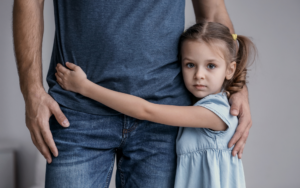
Talking to Kids in a Time of Chaos and Violence
An interview with Scott Hanauer, Clinical director and Keoki Kauanoe, Fatherhood Engagement Director
Talking to young people regularly and compassionately is the best way to help them feel safe in what feels like very unsafe times, says Scott Hanauer, clinical director for FESS.
“With the pandemic and the political violence, it’s more important for significant adults to check in with kids now more than ever,” he said.
“Children are uncertain and scared,” said Keoki Kauanoe, Fatherhood Engagement Director for FESS.
Among the major stress events kids must currently cope with:
- The pandemic that has killed about 400,000 Americans
- The violent rioting at the U.S Capitol
- Demonstrations about racial justice and Black Lives Matter
- Economic fallout from the pandemic – millions of people have lost their jobs
All these issues are what Keoki called “secondary trauma.”
“How do have a difficult talk with kids about these things,” he said.
He and Scott had several suggestions.
- Understand that “there is nothing magic – nothing they can say that will make the stress go away,” Scott said.
- “Don’t take it personally,” what kids are saying about the adult world, Keoki said.
- “Be empathetic listeners, letting kids know that what they are feeling is normal – we know what it feels like” Scott said. “You can’t be dismissive about their feelings. Ask open-ended questions.”
- Before you talk to your kids, “self-reflect,” Keoki said. “Be clear about your feelings. Understand what these issues make you feel like so you can respond to your kids. Make sure they are leading the discussion about how they feel – not talking at them but talking with them- letting them know these things we are going through are really tough.”
- “Let them know ‘you are safe with me,’ “ Scott said. Connect with them using whatever they may like to do. “Find their spark. Maybe its sports, shooting hoops, bike riding.” Added Keoki: “Kids cannot feel resilient if they don’t feel safe and secure. You can serve as a role model for them. Set up a mental and physical environment for them to feel safe.”
- Monitor their social media closely. Scott said kids are already exposed to so much violence just by opening their computers. He works on Thurston Youth Alive, a group working on suicide prevention. At one meeting of the group a young person came in with a document about “13 ways to commit suicide.”
Mostly, Scott said, build resiliency in kids by creating a safe home.
“Kids feel enough stress in their lives,” he said. “They don’t need more stress coming from home.”
